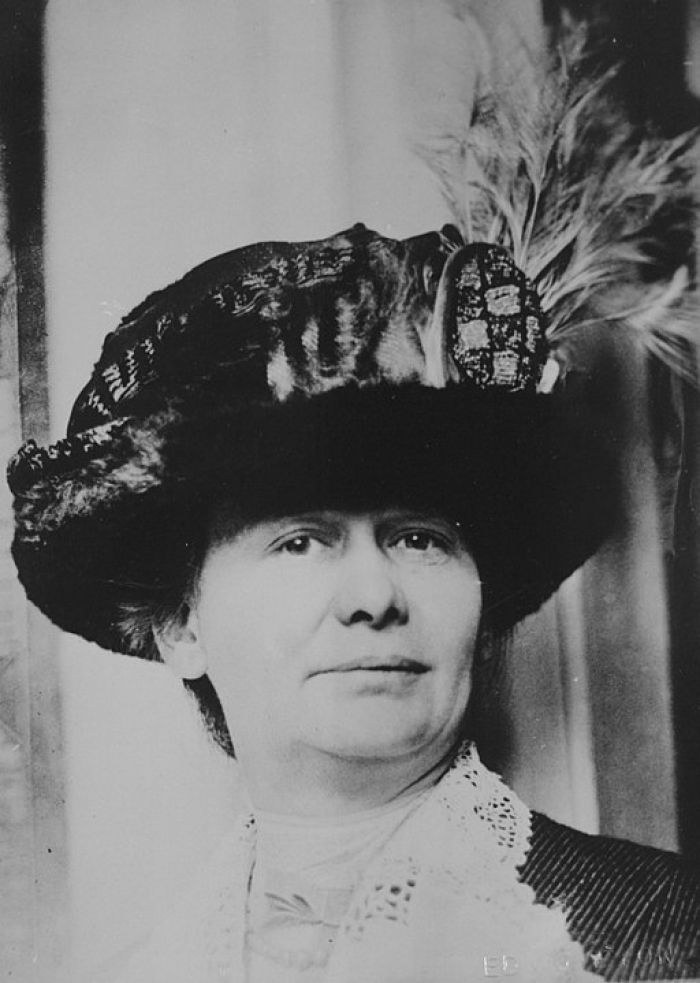For a time, the Supreme Court permitted the government constitutionally to punish speakers for the mere “advocacy of illegal conduct.”
But in Brandenburg v. Ohio (1969), it reversed course to require that punishable speech be intended to, and likely to, incite listeners to engage in imminent lawless action. The Court came to this determination over the course of four decades, after having reached the original conclusion in Whitney v. California (1927).
Court first said advocacy for illegal conduct was not protected by First Amendment
Anita Whitney was convicted under a California statute for membership in and involvement with the Communist Party. The government alleged that the Communist Party advocated the overthrow of the U.S. government by violent methods. Whitney challenged the statute on the ground that it violated her rights under the First Amendment, but the Court, in an opinion by Justice Edward T. Sanford, held speech advocating illegal conduct as outside the ambit of the First Amendment. Because a speaker could be punished for such speech, the Court unanimously affirmed Whitney’s conviction.
Court continued to modify Whitney ruling
Subsequent cases implicitly and explicitly called into question the decision in Whitney to allow advocacy of illegal conduct to be constitutionally punished. In Dennis v. United States (1951), the Court affirmed the defendants’ conviction under a statute similar to the one at issue in Whitney but deviated from the Whitney rule in a significant way: rather than allowing conviction for mere advocacy of illegal conduct, the Court instead relied on the fact that the “gravity of the evil” — a modified version of the “clear and present danger” test — was sufficient to uphold a conviction for organizing a political party designed to bring about the action — violent overthrow of the government — as soon as possible, not at some indeterminate future time or as an abstract idea for discussion.
The Court reached a similar result in Yates v. United States (1957), ruling a judge’s jury instructions in error because they conveyed to the jury that the defendants could not be convicted for advocacy of illegal conduct as an “abstract principle.” Elaborating on this principle in Noto v. United States (1961), the Court stated that “the mere abstract teaching . . . of the moral propriety or even moral necessity for a resort to force and violence, is not the same as preparing a group for violent action and steeling it to such action.” Despite the distinctions between abstract advocacy of illegal action and advocacy of imminent illegal advocacy that gradually undermined the Whitney rule, the Court did not expressly overrule Whitney until Brandenburg v. Ohio.
Brandenburg overturned Whitney precedent
Clarence Brandenburg, a leader in an Ohio chapter of the Ku Klux Klan, had been convicted for making anti-African American and anti-Semitic statements at a Klan rally. The government argued that Brandenburg’s conviction was constitutional under the Whitney precedent.
In a per curiam opinion, the Court unanimously overturned Whitney and expressly articulated a rule first hinted at in Dennis, Yates, Noto, and companion cases: it is unconstitutional, as per the First Amendment, criminally to punish a speaker for abstract advocacy of illegal conduct. For speech to fall outside the ambit of First Amendment protection, the speaker’s advocacy must be “directed to inciting or producing imminent lawless action and is likely to incite or produce imminent lawless action.” Because in Brandenburg’s case neither the statute nor the judge’s instructions to the jury distinguished between “mere advocacy” and “incitement to imminent lawless action,” the Court determined his conviction to be unconstitutional and due to be reversed.
The Court has affirmed the Brandenburg principle numerous times, notably in Hess v. Indiana (1973) and NAACP v. Claiborne Hardware Co. (1982). More recently, in explaining the Court’s denial of certiorari review in Stewart v. McCoy (2002), Justice John Paul Stevens expressly cited Brandenburg, leaving no doubt that the principle continues to govern analysis in this area.
This article was written by James T. Gibson and published in 2009 when Mr. Gibson was staff counsel for the Baptist Joint Committee for Religious Liberty. Gibson is now an assistant federal public defender in Birmingham.

